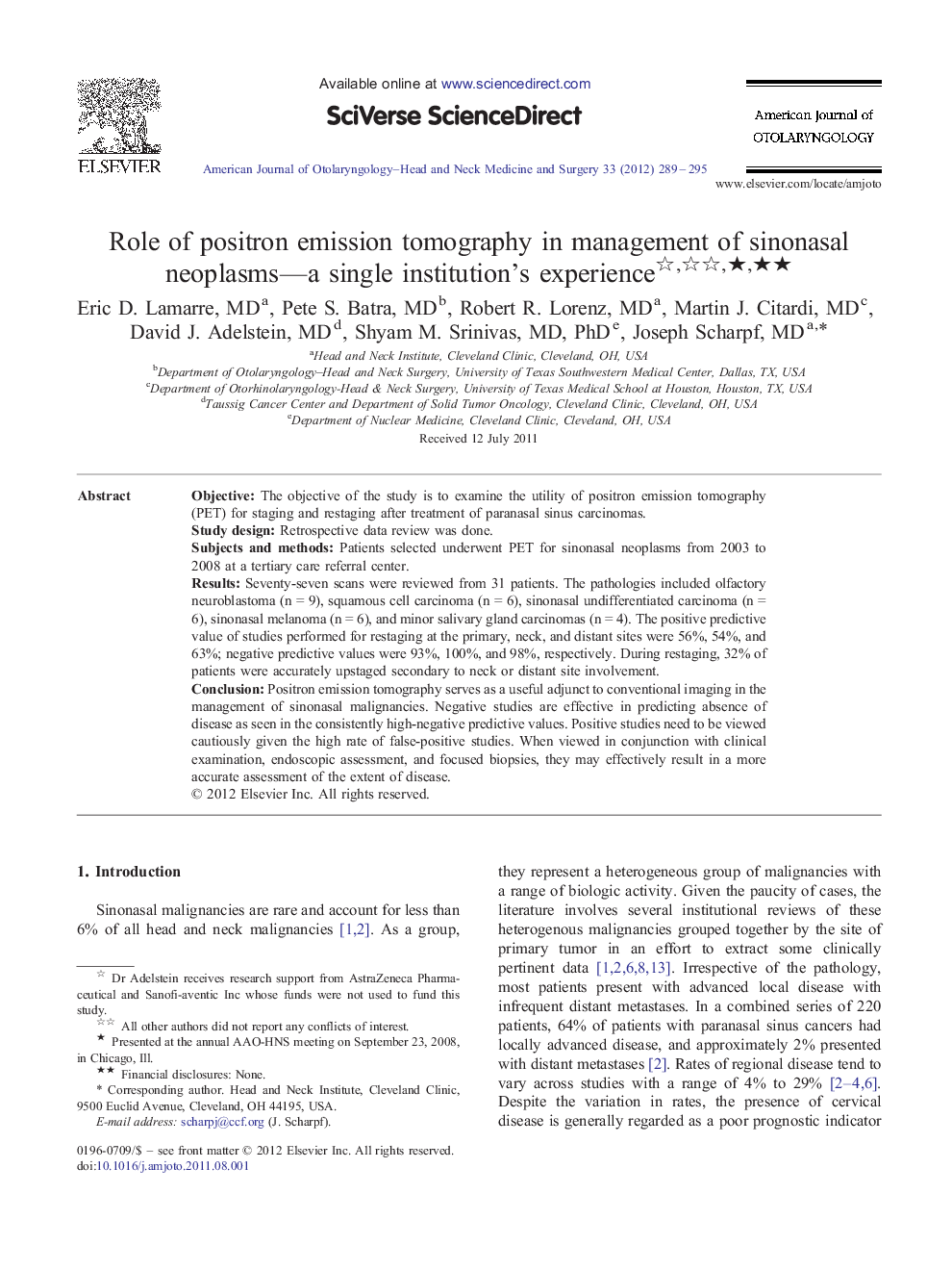| Article ID | Journal | Published Year | Pages | File Type |
|---|---|---|---|---|
| 4103627 | American Journal of Otolaryngology | 2012 | 7 Pages |
ObjectiveThe objective of the study is to examine the utility of positron emission tomography (PET) for staging and restaging after treatment of paranasal sinus carcinomas.Study designRetrospective data review was done.Subjects and methodsPatients selected underwent PET for sinonasal neoplasms from 2003 to 2008 at a tertiary care referral center.ResultsSeventy-seven scans were reviewed from 31 patients. The pathologies included olfactory neuroblastoma (n = 9), squamous cell carcinoma (n = 6), sinonasal undifferentiated carcinoma (n = 6), sinonasal melanoma (n = 6), and minor salivary gland carcinomas (n = 4). The positive predictive value of studies performed for restaging at the primary, neck, and distant sites were 56%, 54%, and 63%; negative predictive values were 93%, 100%, and 98%, respectively. During restaging, 32% of patients were accurately upstaged secondary to neck or distant site involvement.ConclusionPositron emission tomography serves as a useful adjunct to conventional imaging in the management of sinonasal malignancies. Negative studies are effective in predicting absence of disease as seen in the consistently high-negative predictive values. Positive studies need to be viewed cautiously given the high rate of false-positive studies. When viewed in conjunction with clinical examination, endoscopic assessment, and focused biopsies, they may effectively result in a more accurate assessment of the extent of disease.
